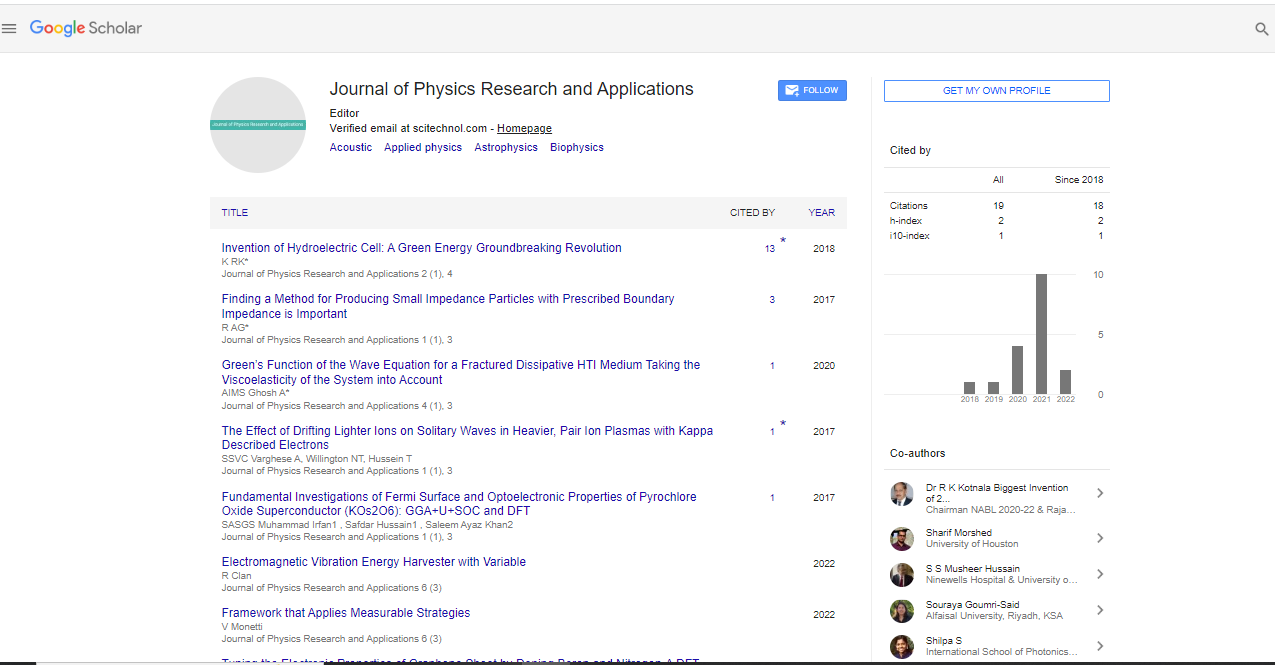Opinion Article, J Phys Res Appl Vol: 8 Issue: 2
Geophysical Techniques Importance in Mineral Exploration and Resource Discovery
Jianhua Xian*
1Department of Physics, University of California, Berkeley, United States of America
*Corresponding Author: Jianhua Xian,
Department of Physics, University of
California, Berkeley, United States of America
E-mail: jian@xia.edu
Received date: 21 May, 2024, Manuscript No. JPRA-24-140078;
Editor assigned date: 23 May, 2024, PreQC No. JPRA-24-140078 (PQ);
Reviewed date: 07 June, 2024, QC No. JPRA-24-140078;
Revised date: 14 June, 2024, Manuscript No. JPRA-24-140078 (R);
Published date: 21 June, 2024 DOI: 10.4172/JPRA.1000106.
Citation: Xian J (2024) Geophysical Techniques Importance in Mineral Exploration and Resource Discovery. J Phys Res Appl 8:2.
Description
Mineral exploration is an important endeavor that helps in the discovery and development of valuable mineral resources essential for various industries, including mining, energy, and manufacturing. Geophysical techniques play a important role in this process by providing valuable insights into the subsurface structure, composition, and potential mineral deposits. The role of geophysical techniques in mineral exploration and resource assessment highlights their significance in discovering and characterizing mineral resources.
Mineral resources, such as metals, ores, and fossil fuels, are critical for sustaining modern economies and meeting global demand for raw materials. However, the discovery of new mineral deposits is becoming increasingly challenging as easily accessible reserves are depleted, and exploration moves into more remote and geologically complex regions. Effective mineral exploration is essential for identifying new deposits, assessing their economic viability, and ensuring a sustainable supply of mineral resources for future generations. Geophysical techniques involve measuring and analyzing the physical properties of rocks and the subsurface to infer the presence of mineral deposits. These techniques leverage differences in the physical properties of minerals, such as density, magnetism, and electrical conductivity, to identify anomalies indicative of mineralization.
Gravity surveys measure variations in the Earth's gravitational field caused by variations in subsurface density. Dense mineral deposits, such as metallic ores, often exhibit gravity anomalies due to their higher density compared to surrounding rocks. Magnetic surveys detect variations in the Earth's magnetic field caused by magnetic minerals present in the subsurface. Certain minerals, such as magnetite, exhibit strong magnetic properties and can produce magnetic anomalies that are indicative of mineralization. Magnetic surveys are particularly useful for mapping geological structures, identifying magnetic ore bodies, and locating mineral deposits associated with igneous and metamorphic rocks.
EM surveys measure variations in the electrical conductivity of rocks and sediments using electromagnetic induction techniques. Conductive minerals, such as sulfides and graphite, can produce anomalous EM responses that are indicative of mineralization. EM surveys are effective for mapping conductive ore bodies, delineating alteration zones, and detecting hidden mineralization beneath cover rocks.
Seismic reflection surveys use sound waves to image subsurface geological structures and stratigraphy. By analyzing the reflections of sound waves off geological interfaces, seismic surveys can provide valuable information about the architecture and geometry of sedimentary basins, fault systems, and potential mineral traps. Seismic surveys are commonly used in petroleum exploration but are also applicable to mineral exploration in certain geological settings. While geophysical techniques are valuable tools for mineral exploration, they are not without limitations. Geological complexity, variable terrain, and the presence of cultural or environmental noise can complicate data interpretation and limit the effectiveness of geophysical surveys. Additionally, geophysical anomalies do not always directly correspond to mineral deposits, and further geological and geochemical investigations are often required to confirm the presence and economic potential of mineralization.
Advancements in geophysical instrumentation, data processing algorithms, and integration with other exploration techniques, such as remote sensing and geochemistry, are driving innovation in mineral exploration. Emerging technologies, such as airborne geophysics, drone-based surveys, and machine learning algorithms, are expanding the scope and capabilities of mineral exploration, allowing for more efficient and cost-effective resource assessments in remote and challenging environments. As global demand for mineral resources continues to grow, the development and application of advanced geophysical techniques will be essential for discovering and characterizing new mineral deposits and ensuring a sustainable supply of essential raw materials for future generations.
 Spanish
Spanish  Chinese
Chinese  Russian
Russian  German
German  French
French  Japanese
Japanese  Portuguese
Portuguese  Hindi
Hindi 
